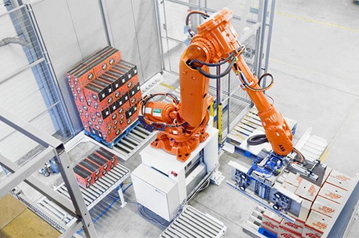Thanks to the Internet, it’s never been easier for food producers to lose a good reputation because of a health and safety scare. Robot-based automation can lower that risk.
In fact, the US Food and Drug Administration (FDA) and the National Institutes of Health launched the Safety Reporting Portal website in May 2010 to make it even simpler for consumers and industry professionals to submit reports about food and other products.
The FDA expects the number of reported incidents related to food to rise significantly. The new FDA website comes against a backdrop of growing consumer interest in where and how food is produced. “Traceability is the challenge for the food industry,” says Ian Greaves, Managing Director of IGI Ltd, a specialist firm of consultants working internationally on health and safety issues for the food industry. “The ‘Farm to Fork’ concept is now a key issue.
Although the food industry has always been able to follow its product, there will be more pressure from agencies on food suppliers, manufacturers and retailers to prove where their food came from and show all the steps it took to get to the consumer.” Traceability is inextricably linked to health and safety. Greaves believes that the food industry is already well-regulated and has recognized safety systems in place. “These may be ISO or in-house quality standards,” he says. “HACCP [Hazard Analysis Critical Control Point] has been part of the manufacturing industry for years, but now enforcement officers are more familiar with the concept, and, as legally required, they are looking at process management and in-house monitoring a lot more.” When it comes to process management, the introduction of automation and robotics has clear benefits.
Most food safety issues are caused by people
Alan Spreckley, Channel Manager at ABB Robotics in the UK, says, “For the consumers who buy the products, the risk of contamination needs to be lowered as much as possible. This can only be done by automating and removing human intervention. Direct contact with machinery should be minimized, and in the more uncomfortable areas of production, most of the workforce should be removed.” Greaves adds, “Most food safety issues are caused by people. Therefore if you take the ‘dirty hands’ away, the food is safer. However automation can lead to physical contamination if it is not monitored or maintained well. Moreover, there are still areas in the food industry in which automation is too difficult or costly to implement. And when companies do introduce a new process or a piece of equipment, they have to ensure that the staff who interact with it are trained to use it correctly and safely.”
Spreckley points out, “Robots traditionally remove people from hazardous and unhealthy environments. High repetition – for example feeding or unloading machinery – invariably results in lapses in concentration. It only takes a split second for an accident to occur, and that can have long-term consequences. Robots can perform these tasks to a consistent quality and at a higher consistent speed than a human being. Industry suffers from lost days due to work-related injuries such as repetitive strain, not to mention the subsequent compensation claims.
Robots definitely minimize these instances by removing people from dull, dirty and dangerous tasks.” Training and maintaining the highest hygiene standards, however, remain at the heart of safe food production. As Greaves notes, “Good food producers have an overall ethic on quality, service and safety. The words ‘safety culture’ are often used to describe a producer who does not compromise on training its staff, monitoring its product and always looking to improve. A safe food company is one where the directors down to the shop floor understand the need for safety and want to be part of that culture.” And for those companies who get it right, he says the benefits are “safer product, enhanced reputation, less wastage and motivated staff.”
[info] www.abb.com/robotics [/info]

